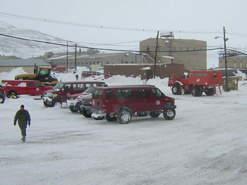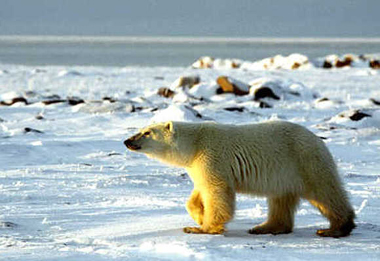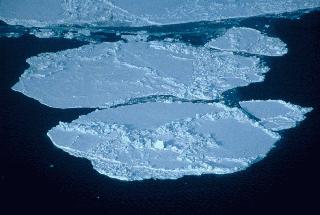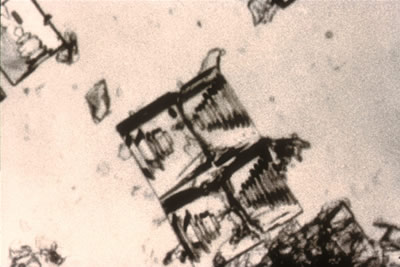Two snowflakes that look very much alike!
Click on image for full size
Nancy Knight/NCAR
Can Two Snowflakes Look Alike?
Even though most snowflakes have a hexagonal structure, there are many ways that water molecules can arrange themselves as the water freezes.
Some people say that there are no two snowflakes alike. However, snowflakes can look alike. Scientist Nancy Knight from the National Center for Atmospheric Research found the two simple snowflakes pictured at the left. They look pretty much identical, don't you think?
Last modified January 29, 2007 by Lisa Gardiner.
You might also be interested in:

Polar exploration includes the exploration of the Arctic and the Antarctic. The Arctic is the area around the Earth's north pole. Antarctica is a continent that surrounds the South Pole. When you think
...more
What Will You Find There? If you travel to the South Pole, you will find the continent of Antarctica surrounded by the Southern Ocean. The geographic South Pole is marked by a large sign that scientists
...more
Antarctica is the coldest, windiest, and driest continent on Earth. It is about one and a half times the size of the United States. Almost all of Antarctica is covered with a thick layer of ice called
...more
In the Arctic, you will find the Arctic Ocean surrounded by the continents of Europe, Asia, and North America. You will find the geographic North Pole and the magnetic North Pole there; both are in the
...more
Polar bears live in one of our planet’s most extreme environments, the Arctic . They thrive in the freezing cold. But because of global warming, polar bears might be in trouble. Scientists are studying
...more
Sea ice is frozen seawater. It floats on the oceans that are in Earth's polar regions. The salt in the seawater does not freeze. Very salty water gets trapped in the sea ice when it forms. The pockets
...more
The Southern Ocean is sometimes known as the Antarctic Ocean or South Polar Ocean. It surrounds Antarctica in the South Polar Region. The Southern Ocean is a bit different from other oceans. Other oceans
...more














